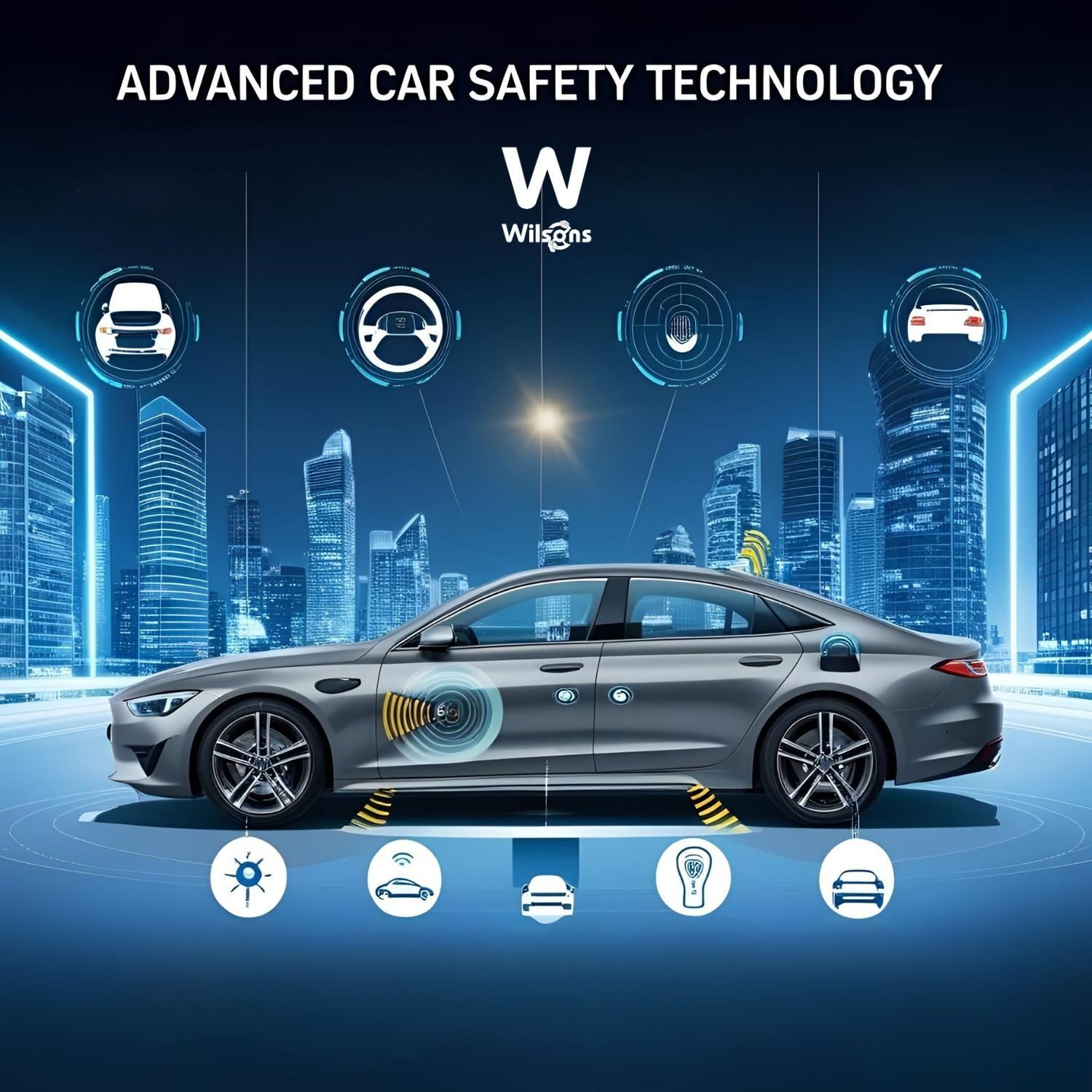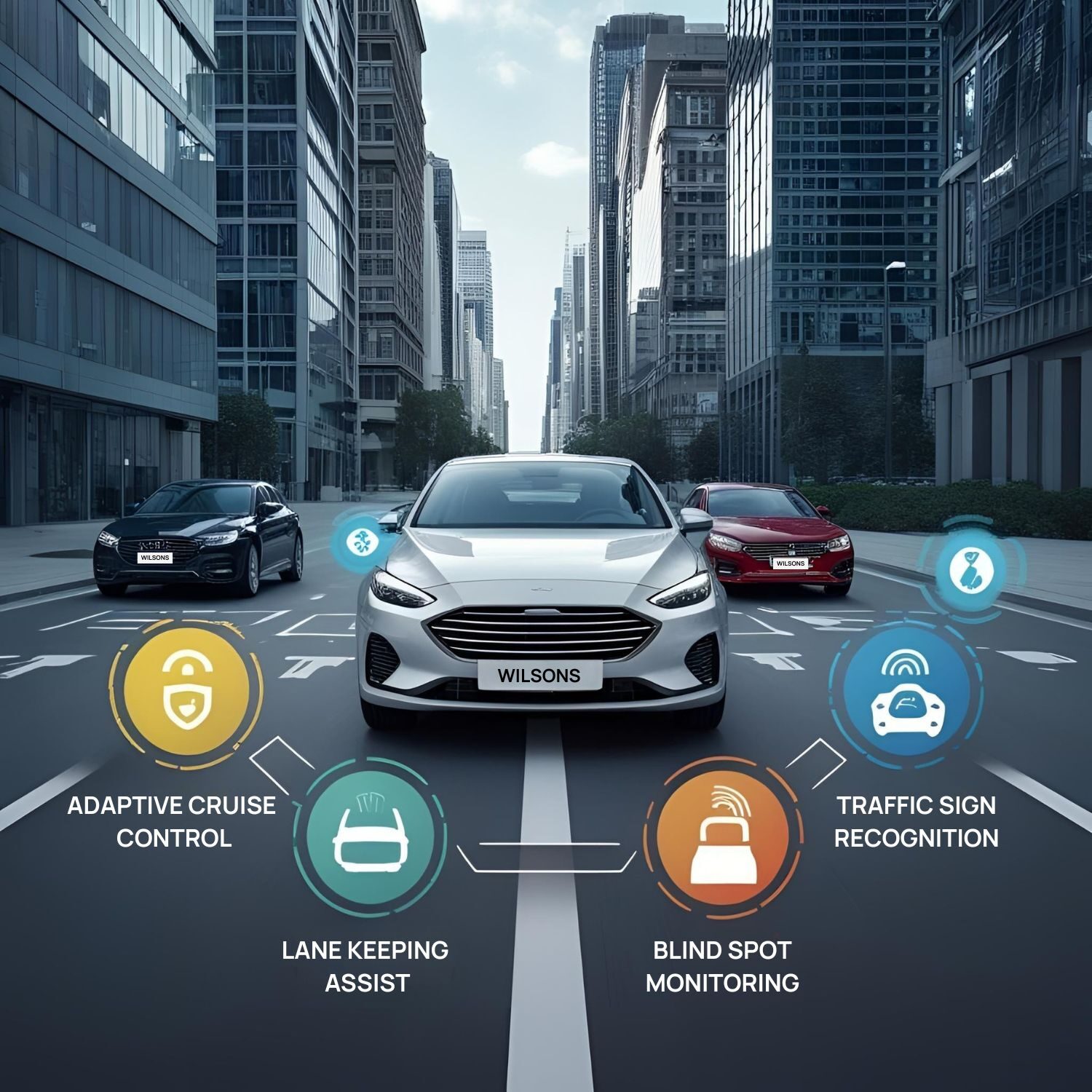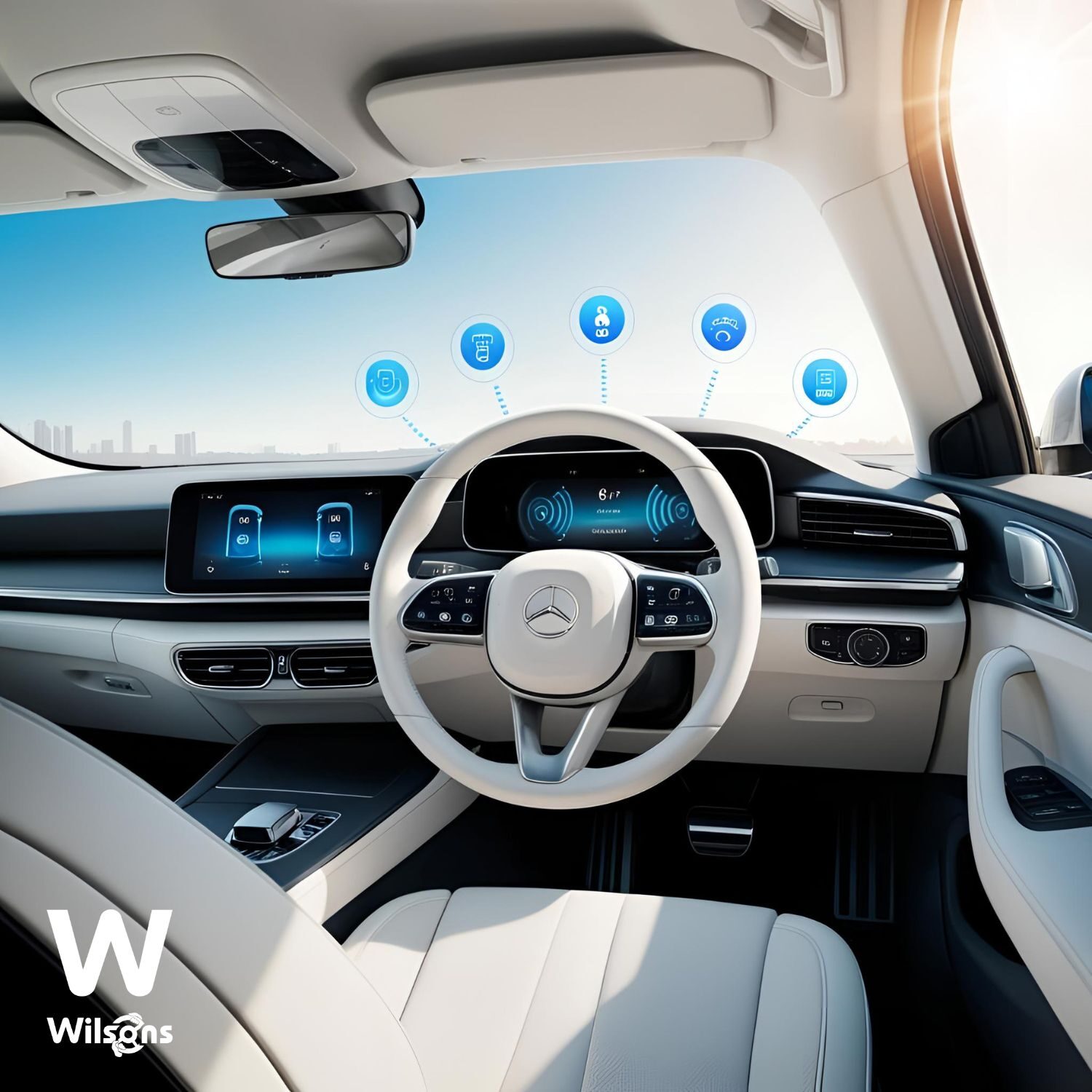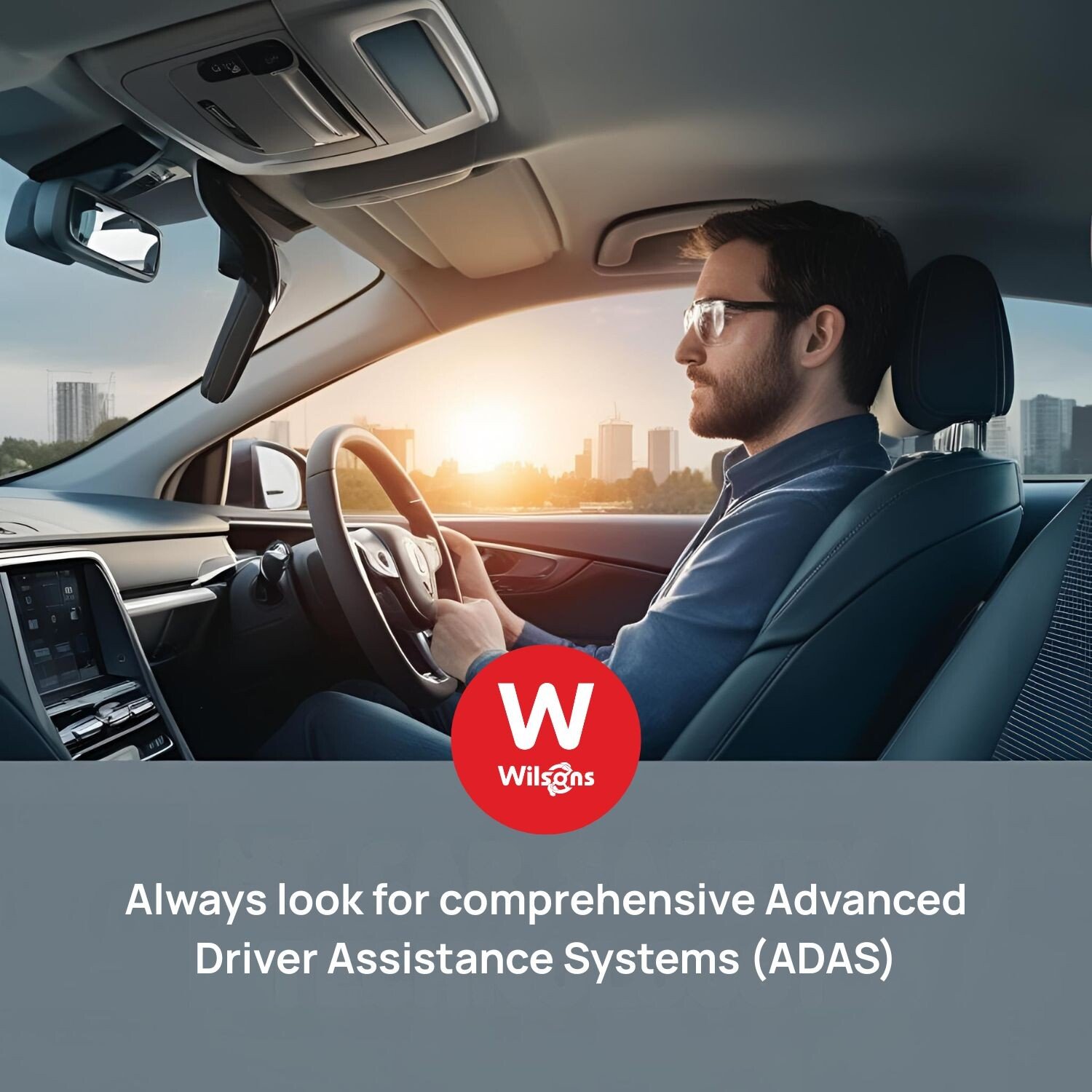

Published: 23 May 2025
Do you remember when car safety meant just seatbelts and airbags? Well, those days are long gone! For drivers in 2025, vehicle safety has transformed into what feels like something out of a sci-fi movie. In fact, cars can now see, think, and react faster than we humans can - and technology is only going to get more intelligent.
Today's vehicles don't just protect you during a crash; they're actively working to prevent accidents from happening in the first place. So, if you're shopping for a new car this year, understanding these game-changing safety technologies isn't just smart – it could literally be a lifesaver.
In this article, we discuss the must-have safety features for your next car to stay safe on the road. Read on to find out more…
Vehicle safety technology is ever-evolving, so the latest models of 2025 boast a comprehensive suite of safety features that go well beyond the basics. Thanks to Euro NCAP evaluations setting increasingly stringent standards, car buyers can check how their potential new set of wheels scores against the desirable 5-star rating. Below, we highlight some of the best car safety systems to consider:

Most new vehicles now come equipped with intelligent systems that actively monitor driving conditions to pre-empt a potential problem. ADAS commonly includes the following features:
This potentially life-saving technology uses radar and cameras to detect potential collisions with vehicles, pedestrians, or other obstacles on the road. If the driver doesn't respond in time, the system automatically applies the brakes to avoid or mitigate the impact.
This system detects lane markings and alerts drivers if they begin to drift out of their lane without signalling first. Advanced versions of lane-keeping assist can even gently steer the vehicle back into the proper lane position. Very clever!
Using sensors to detect vehicles in your blind spots, this helpful safety feature provides visual or audible alerts when changing lanes could be hazardous, helping prevent all-too-common side-swipe accidents.
Going beyond traditional cruise control, the adaptive version maintains a preset distance from the vehicle ahead by automatically adjusting speed. This form of cruise control can even bring the car to a complete stop in traffic if necessary.
This type of technology cleverly identifies speed limit signs and displays the information on your dashboard, helping you stay informed of changing limits and avoid speeding tickets - phew!
The ability to see clearly in all conditions is fundamental to safe driving. Many new cars are fitted with safety features to assist the driver, including:
Modern headlight systems can automatically dim when detecting oncoming traffic. Intelligent headlights can even adjust brightness and direction based on driving conditions and steering input.
Multiple cameras provide a 360-degree view around the vehicle, making parking and navigating tight spaces significantly safer and easier.
Available in some premium models, this type of technology uses infrared cameras to detect pedestrians or animals beyond the initial headlight range by displaying enhanced images on the dashboard.

When accidents can't possibly be avoided, passive safety features help protect all occupants on board. This type of technology includes:
Many new vehicles feature sophisticated airbag deployments that automatically adjust based on the severity of impact, occupant position, and whether seatbelts are fastened.
These systems tighten seatbelts, adjust headrests, and prepare airbags for deployment when a collision appears imminent.
Nowadays, most new cars are engineered with crumple zones that absorb impact energy while maintaining a rigid passenger compartment.
If you have a particular model in mind, then you’ll want to know the exact safety features of the car. Here at Wilsons Epsom in Surrey, we stock 12 of the world’s leading car manufacturers all on one site. Here’s a glimpse into the top safety tech from our franchise brands:

The Fiat brand combines savvy Italian style with thoughtful safety innovations, such as:
This analyses driving patterns to identify signs of fatigue, prompting you to take breaks when needed.
Helping to prevent low-speed collisions common in city driving, this tech works by automatically applying the brakes when obstacles are detected.
A really handy feature, this automatically adjusts headlight brightness based on surrounding conditions and oncoming traffic, maximising visibility without blinding other drivers.
Hyundai's SmartSense technology suite is a real benefit that delivers sophisticated protection. Here’s what you can expect:
This feature goes beyond standard collision avoidance by specifically detecting oncoming vehicles when turning at junctions.
An often overlooked feature, this alerts passengers if it's unsafe to open doors due to approaching vehicles or cyclists, helping prevent unnecessary door-related accidents.
This combines adaptive cruise control with lane-centring technology to reduce fatigue on motorways, maintaining speed and position, all while monitoring the surrounding traffic.
Nissan's Safety Shield 360 package offers comprehensive protection with six advanced features. Their vehicles utilise cameras, radar, and sonar to monitor the environment around your car, including:
This system monitors steering patterns to detect driver fatigue and suggests breaks from driving when needed.
Combining Intelligent Cruise Control with Steering Assist, this feature helps maintain lane position and distance from vehicles ahead, helping to make highway driving less stressful.
When backing out of parking spaces, this handy system warns of approaching traffic from either side, reducing the risk of collision.
Alfa Romeo combines Italian performance with cutting-edge safety technology, including:
This system manages speed to maintain a safe distance from vehicles ahead while helping the driver stay within lane boundaries.
Going beyond just warning the driver, this system can actively intervene with steering correction if you attempt to change lanes when a vehicle is detected in your blind spot.
This automatically corrects the vehicle's course if unintentional lane departure is detected.
Peugeot's intelligent i-Cockpit system cleverly integrates safety and control in an innovative dashboard design by boasting the following:
This detects potential collisions and automatically applies the brakes if no action is taken by the driver.
A very important safety feature, this continuously evaluates driver vigilance through steering wheel movements and vehicle positioning relative to road markings.
Handy to have, this type of tech reads speed signs and displays them on the instrument panel, keeping you informed of current limits - handy for when you’re driving in unfamiliar areas.
Jeep vehicles are designed to combine off-road capability with advanced safety technologies, including:
This feature provides visual and audible alerts of potential front-end collisions and can apply autonomous braking if necessary.
Will alert drivers to vehicles visible in blind spots when changing lanes or backing out of parking spaces.
This tech provides a wide-angle view of the area immediately behind your vehicle when in reverse.
As a brand, Citroen emphasises comfort alongside safety innovations for drivers, including:
This patented design enhances ride comfort for all on board while maintaining vehicle stability in emergency manoeuvres.
This tech keeps essential driving information within the driver's line of sight, while reducing distraction.
This does what you’d expect by recommending breaks during long journeys to combat fatigue.
Renault's safety philosophy focuses on prevention, correction, and protection. As such, their models include a vast array of technology, including:
Also known as AEB, this detects stationary and moving vehicles, as well as pedestrians and cyclists, by applying brakes when collision risk is detected.
This feature continuously calculates and displays the safe following distance to the vehicle ahead.
A regular addition in new vehicles, this alerts drivers when drifting out of their lane without signalling first.
Rapidly growing in popularity, the Dacia brand proves that advanced safety doesn't have to come with a premium price tag, thanks to these features:
This tech automatically contacts emergency services in case of a serious accident, providing location data even if occupants are unable to communicate.
Using rear-mounted sensors, this is designed to detect vehicles in hard-to-see areas, illuminating warning lights in the side mirrors.
Front sensors detect decreasing light levels and automatically switch on headlights, ensuring visibility during sudden weather changes or when entering tunnels.
MG offers impressive safety features at affordable price points, meaning the brand is winning hearts and minds all over the country thanks to the following tech:
This is a comprehensive suite of driver assistance technologies, including Traffic Jam Assist and Intelligent Speed Limit Assist.
As you’d expect, this provides a bird's-eye view around the vehicle for safer manoeuvring in tight spaces.
This helps prevent the vehicle from crossing lane markings or leaving the road by automatically applying steering correction.
What we love about the Abarth brand is that it balances high-performance driving with essential safety technologies, including:
This innovative system improves cornering behaviour and safety by automatically distributing torque to the wheels with the most grip, reducing the risk of skidding in challenging conditions.
Abarth vehicles feature enhanced braking components for shorter stopping distances and better heat management, crucial for both sporty driving and emergency situations.
This is a specially calibrated stability control system that maintains safety while still allowing the spirited driving experience Abarth is known for.
As one of the newest brands in the UK market, Leapmotor brings innovative safety technology to drivers, including:
This brand-new feature uses advanced cameras and algorithms to detect not just drowsiness but also distraction, ensuring drivers maintain proper attention to the road.
Select models in the Leapmotor range feature thermal cameras that can detect pedestrians and animals in low-light conditions beyond the range of traditional headlights.
This tech allows drivers to activate safety features through voice commands, keeping their hands on the wheel and eyes on the road ahead.

At Wilsons Epsom, safety is our priority. Our extensive selection of franchise brands offers cutting-edge safety technologies across various vehicle segments and price points. Our expert team can guide you through the specific safety features of each model, helping you make an informed decision that prioritises the protection of you and your loved ones.
We proudly work with manufacturers that consistently achieve top 5-star Euro NCAP safety ratings, including Abarth, Alfa Romeo, Citroen, Dacia, Fiat, Hyundai, Jeep, MG, Nissan, Peugeot, Renault, and Leapmotor. Each brand brings its unique approach to vehicle safety, ensuring you can find the perfect combination of features for your specific needs and driving style.
Visit our showroom today to experience these safety features first-hand through guided demonstrations and test drives - we look forward to seeing you!
A: Not all safety features come as standard. While basic systems like Accident Emergency Braking (AEB) are increasingly common, more advanced technologies might be part of optional safety packages at an extra cost. Always check the specific model's standard and available features first.
A: Yes, many insurers offer discounts for vehicles equipped with advanced safety features, as they reduce the likelihood of accidents and claims.
A: While some aftermarket systems are available, factory-integrated safety features typically offer superior performance and reliability. Consult with a professional before considering aftermarket safety upgrades.
A: Most new vehicles have self-diagnostic capabilities that alert you to system malfunctions. However, regular maintenance at authorised service centres helps ensure all safety systems remain fully operational.
A: While advanced safety technology can increase vehicle cost, many manufacturers now include impressive safety packages even in more affordable models.
A: Performance may be affected in extreme conditions. Camera-based systems might have reduced effectiveness in heavy rain, fog, or snow, while radar-based systems tend to be more weather-resistant.